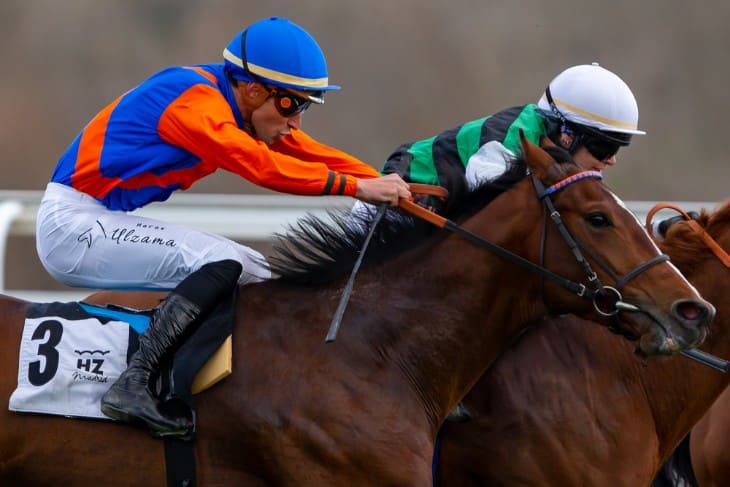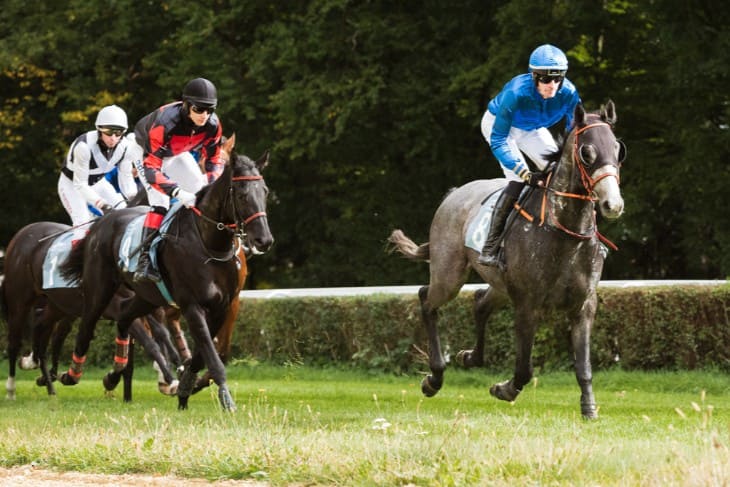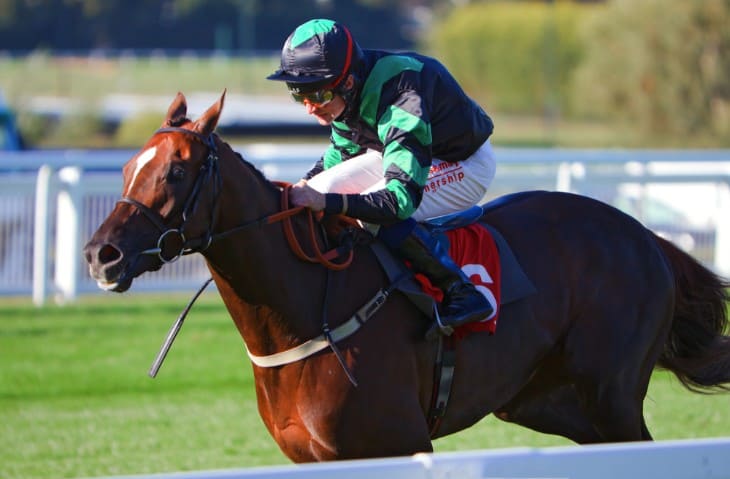- Why Post Positions Matter
- Strategy and Outcome
- Analysing the Best Post Positions by Track and Distance
- The Role of the Draw in Determining Post-Positions
- The Role of Post-Position
- Impact of Post Position on Betting Odds and Strategies
- Expert Opinions on Ideal Post Position
- Training and Preparation
- Final Verdict
Horse racing is a sport which has a touch of tradition, excitement and several strategies. Many factors can influence the outcome when it comes to winning a race. Post position is one of the factors to take note of or the position in which the horse starts the race. This article is about what exactly are the post positions and how can give a certain edge to a certain horse.
Why Post Positions Matter
A horse’s performance can be significantly influenced by its post position. It may seem like just another place on the track to start running from, but where you start running from actually matters quite a bit. How far away you are from that inside rail can mean more than you think! If you’re positioned closer to the rail at the beginning of your run, then you have less distance to cover overall.
However this advantage comes with obvious disadvantages too; if you’re running right next to other horses, then it could be hard for you to find an open path that gives you enough room as the race goes on.
On the opposite side of things, if your horse starts at an outer post position then that means more space for them to navigate through during those early moments where all ten horses are crowding each other out on track. This can be helpful for races with lots of runners because it gives your horse more chances to avoid any early accidents caused by crowded conditions.
But while freedom in movement is nice and all, having been given access to plenty of open space comes with a price: they also have more distance to travel than those who maybe started in positions 1-4 would have had.
It should also be noted that tracks themselves come into play when considering how post positions affect races (tracks meaning dirt or turf). Some tracks might have sharp turns so being on the inside would prove advantageous while competing on long straightaways might offer flexibility and strong finishes if you’re on the outside. Trainers, jockeys and bettors alike should keep themselves informed of these things before a race.
It’s not just about physical advantages though. Post positions can also influence the psychology of how jockeys approach their race plan which then affects training horses. If they start well because they listened to your plan that came from their confidence boost in a good start then it will be easier for them to keep up with competing horses.
Strategy and Outcome
Post positions don’t just affect the way jockeys think during, but also before races even begin. Once those gates swing open the race starts, and so does strategy. Different post positions cause different thought processes. For example: Horses breaking from inside posts are usually pushed into taking leads early on so they avoid getting blocked by other horses and trapped against the rail.
This is why you see such a fast pace being set from the get-go! On the other hand, if your horse is starting at position ten, then there are plenty of other horses ahead of you to observe and react to as the field moves forward rather than sticking your head down and charging ahead immediately.
This gives jockeys two options:
1) make an early move that gets them into a favourable position or
2) hold back so you save energy for when it matters (the end).
The thing about option two however is that it can be tough managing such a long route around the track while also trying to maintain ground (or make up ground) in later stages of the race without burning out your horse or overworking yourself too soon
The strategy becomes even more complex in races with a large field of runners. Horses in extreme outer positions may find it difficult to secure a good spot without expending significant energy. Similarly, those on the extreme inside must be quick off the mark to avoid getting squeezed by the pack.
The influence of post positions on race outcomes is also evident in statistical data, which often shows trends of certain post positions performing better at specific tracks or distances. This information is vital for trainers and jockeys when planning their race strategy and for bettors making informed decisions.
The post position shapes the tactical approach to a race, affecting everything from the initial speed to positioning during the race, and ultimately, the finish. A thorough understanding of how these starting spots influence race can provide critical insights into predicting race outcomes.
Analysing the Best Post Positions by Track and Distance
Determining which are the best post positions requires a detailed analysis of track configurations and race distances. The optimal post can vary greatly, influenced by each one’s unique characteristics as well as length. Let’s take a closer look at how these two factors play a role:
- Track Configuration: Tracks with tighter turns often favour horses starting from the inside posts. These positions allow for a shorter distance around the bends giving them an edge over other contestants. For example, on a track with a sharp first turn being on its inside can mean leading the pack or getting stuck in traffic.
- Race Distance: The impact of post positions also changes with every distance run through in every event. In shorter sprints quickly taking the lead position from an inside post can be crucial. However, once you start talking about longer races this significance tends to diminish because you have more time to make up for lost ground if you end up too far out.
- Starting Gate Location: The placement of the starting gate further influences the importance of good draw spots. Gates positioned close to a turn can make early positions even more critical, as there's less time to correct for a poor start before the bend.
- Historical Data: Analysing past race outcomes provides valuable insights into post-position performance. Certain tracks may show a consistent trend where specific posts yield a higher win rate. This data is invaluable for trainers and bettors alike, helping to inform strategic decisions.

The Role of the Draw in Determining Post-Positions
Draw plays an important role in determining post positions for horse races; it determines who starts where so you can see why it’s valued so much by trainers and owners. This process involves randomly assigning starting positions to horses that are going to enter the race. The draw is crucial because it can significantly impact a horse's chances of winning, based on the factors previously discussed, such as track configuration and race distance.
During the draw, each horse's connections, usually the trainer or owner—are often present, eagerly awaiting the outcome. The draw can be a tense moment, as a favourable post position can give a horse a distinct advantage while some spots would complicate their strategy more than anything else.
The drawing of posts is fair. Without it, a single horse could be at a disadvantage in every race. How this works is that it adds an element of randomness to the race planning process. This randomness ensures that any horse can win. Even the best horses can find themselves in a difficult position due to their starting post.
For bettors, this draw means everything. It adjusts their strategy and impacts their chances of winning big time. Imagine betting on your favourite fastest horse only to find out that they started from the wrong end. Your horse might have good speed but may not be able to make up for its bad positioning.
To put it simply, how well we perform in a race depends heavily on the fairness of the draw. Both luck and preparation play major roles here, so being prepared for anything will always give you better results than others who aren’t.
The Role of Post-Position
Bettors who are looking to make exotic bets - those that require bettors to predict the finishing order of multiple horses - should take into account post positions. With exactas, trifectas, and superfectas, it becomes even more important for bettors to predict which horse will finish in each spot. Bettors may have a preference for horses from certain post positions to finish higher up, based on historical data or the specific conditions of the race.
Post positions can be crucial when handicapping as well; this is where bettors evaluate how well horses will perform in a given race. A horse’s ability to win from different post positions also depends on track conditions and its competition. This can help bettors better assess whether or not a horse has a chance at winning.
Impact of Post Position on Betting Odds and Strategies
The connection between post position, betting odds, and strategies is a strong one. It can dictate the way bettors make their decisions which ultimately affects the outcome of a wager:
- Betting Odds Adjustment: Bookmakers will tinker with the odds that they give to horses based on their post position. A more favourable draw can lead to shorter odds, reflecting a higher chance of winning. On the other hand, longer odds might be given to a horse with a less advantageous post position. Bettors should keep these things in mind when they're placing their bets since it's an important factor in determining if a horse has a better or worse shot at success.
- Influence on Betting Strategies: Smart bettors use information about post positions to refine and optimise their strategies. Horses that are known for great beginnings become even more attractive bets if they secure an inside post in races where early positioning matters most. Inversely, horses that boast late bursts of speed are less affected by outer positions in longer races where there is more time to crack up some momentum.
- Consideration in Exotic Bets: For exotic bets like exactas, trifectas, and superfectas where bettors must predict the finishing order of multiple horses, post positions become even more critical. Bettors might favour horses that fall into certain post positions so that they can finish near the top based on historical data and specific conditions.
- Role in Handicapping: Post positions make up an integral part of handicapping where bettors evaluate different factors associated with how a horse could perform in any given race. The ability for a horse to win from different starting points (considering variables like track conditions and competition) can sway someone’s opinion on its probability of success here too.

Expert Opinions on Ideal Post Position
There is no one clear ideal post position in horse racing as opinions vary greatly among experts. However, a consensus can be found if you take into account various race types and tracks.
Many experts agree that middle post positions usually offer an advantage because of their balanced placement. Especially with races that have large fields, horses starting at these spots can avoid being crushed against the rail or having to run farther like they would with outer posts. This central location provides some flexibility in terms of race strategy, allowing jockeys to better adjust their pace without being too close or far from other racers.
Experts tend to prefer inside posts for shorter sprints due to the reduced distance between them and the inside rail. The shortest distance between two points is a straight line after all. However, this advantage comes at the risk of getting boxed in by other racers if they don’t get off to a fast enough start.
On longer races where pacing and stamina play bigger roles, some experts might suggest slightly further outer positions. These locations can allow horses to avoid overcrowding in the early goings and give jockeys more room to strategize overtakes and pacing.
Horse racing styles are also factors that experts often consider when giving post-position recommendations. Horses with strong early speed work well with inside positions, while those known for their finishes may perform better from the outside where they have more room to navigate through other racers.
At the end of the day, there is no definitive best post position. Instead, experts suggest considering all these factors - track layout, race distance, horse characteristics and so on - before deciding where you want your horse to start.
Training and Preparation
Training and preparation are key aspects of horse racing. Deciding how to approach each different starting spot is crucial for trainers and jockeys as they aim to help their horses overcome any challenge tied to the corresponding post position.
For horses that draw inside posts, trainers make sure their focus is on a quick and clean start. Their reaction times need to be top-notch since getting ahead early can save them from being boxed in by other racers. During training sessions, drills could simulate crowded conditions that come with inside posts so that it becomes easier for these horses to keep up their pace even in tight spaces.
When horses are trained for middle or outer post positions, one of the key things trainers work on is stamina and overtaking strategies. These horses have more ground to cover so it's important they can cope with the extra distance. This might mean practising overtaking moves and making sure they can keep up a strong pace throughout the race so that if they lose time at the start, they can catch up later on.
Adaptability is also crucial. Horses need to be prepared for any situation that comes their way during a race whether that's finding space in a crowded field or capitalising on an empty path from the outside. This mix of physical conditioning and mental training will help them stay calm and alert under racing conditions.
Jockeys’ expertise in different post positions also plays a big part in preparing for races. They need to know how to get the best out of each horse, as well as how to navigate them through each stage from their starting spot. This might involve deciding when to push forward, when to hold back or when it's time to make a vital move towards the front.
By focusing on these aspects of preparation, trainers and jockeys can give horses their best chance of success regardless of where they start. The goal is always to see every starting position as a potential winning position with thoughtful planning and thorough preparation.
Final Verdict
There’s no definitive answer to what is the best post position in horse racing, but there are ways riders can increase their chances of success based on where they’re placed at the start gate. The ideal positioning varies depending on the track type, distance and individual horse style; however, getting off to a good start isn’t just about luck.
By combining scientific knowledge with personal gut feelings based on years of experience handling these animals riders are able to strategize accordingly. In this sport that blends both science and art, riders play a vital role in the pursuit of the best post position. Despite all the difficult aspects of horse racing, it’s hard to deny that this sport certainly knows how to keep fans entertained.








